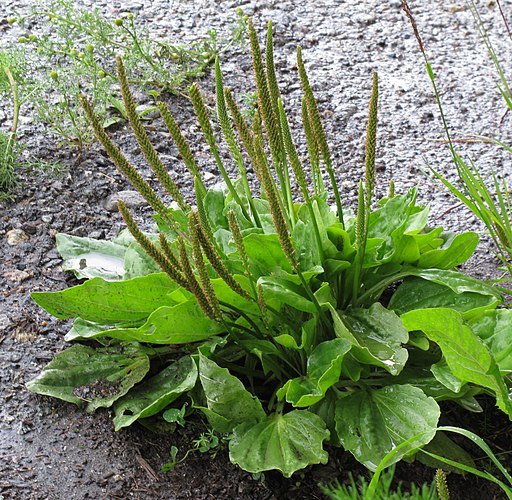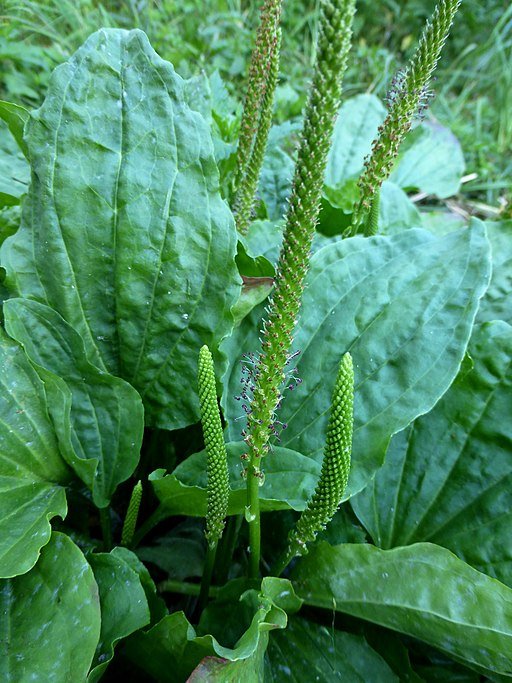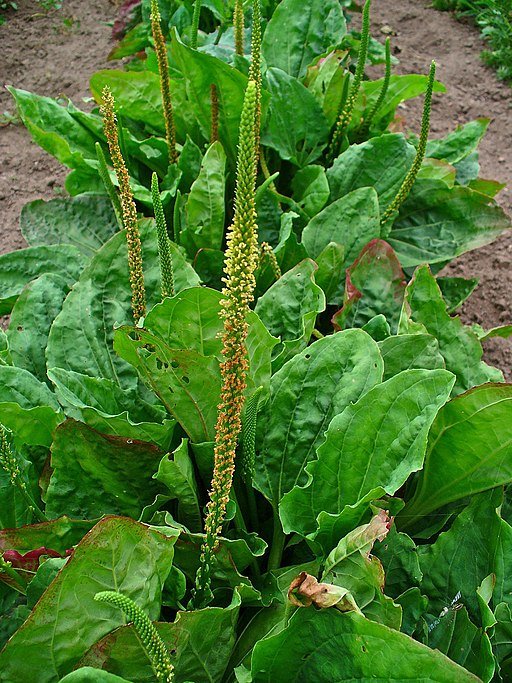INTO THE WILD: Plantago Major in survival cuisine and folk medicine (10% to hive-181136)
The Broadleaf Plantain
The Broadleaf Plantain (Plantago major) is a faithful companion of humans from ancient times. Originally it comes from Eurasia. In China, The Broadleaf Plantain was used to heal poisonous bites of the snakes and scorpions for... 3000 years! Several centuries later, in Europe, folk medicine recommended applying fresh leaves to wounds, abrasions, ulcers, and insect bites. The infusion of The Broadleaf Plantain was also used to heal wounds.
Today, having at the disposal of modern science, we know that our great-grandfathers were right to appreciate the herb because it contains iridoid glycosides and tannins, which have a healing effect.
In the 17th century, Europeans expanded the plantain in the Americas, possibly by accidentally spreading its seeds on the soles of shoes or along with luggage. There, the Broadleaf Plantain spread at an astonishingly rapid pace (especially in North America) and even adopted the colloquial name "White Man's Footprint" among the indigenous peoples.
The Broadleaf Plantain is found on most continents. It grows almost everywhere: it does not mind that it is in a darkened place, or that it is often trampled upon when it grows in the middle of a path. When trekking, its presence is beneficial - for abrasions and corns, it is enough to break off a few large, fleshy leaves of a plantain growing somewhere on the trail and make a dressing of it so that the feet heal faster.
What about food?
Plantain leaves are a great vegetable, they contain tannins, minerals such as magnesium, zinc, and potassium, as well as vitamins A, K, and C. Young leaves can be added raw to salads. It is worth chopping them well across the innervation.
The older ones are a great filling for tarts, dumplings, and pancakes. Nothing, however, beats the taste of plantain leaves in a chickpea flour batter. Its taste is then compared to a chicken.
Pour the chickpea flour with water in a proportion of about 1: 1 by volume and leave it to swell for a minimum of an hour. Add salt, pepper, or other spices. The dough should have the consistency of thick pancake dough and stick to the leaves. Dip the thoroughly washed plantain leaves in the dough and fry in a pan until golden brown. When ready, drain excess fat and serve.
Summary
Common plantain is a great plant for people starting their adventure with survival cuisine.
- It is freely available - it does not require collecting it deep in the forest or high in the mountains
- It does not require any thermal or mechanical treatment, so you do not have to worry that you will prepare it incorrectly and get food poisoning
- It is hard to confuse it with any other plant. There are no poisonous plants that look similar.
However, remember about the universal rules related to gathering food:
- Even if the plant is not poisonous, soil and air may be, so avoid picking up plants near industrial zones and highways.
- Always wash plants before consumption and make sure you are harvesting the right variety
- Don't collect the sick plants, with fungus or insects on it
- When you eat the plant for the first time, don't eat a lot of it. Let your organism get used to the new food.
The plant is available in Venezuela. It’s called "Plantago Major" :)
Thank you for reading,
@papi.mati
10% of income from this post goes to the community account @hive-181136


